Portugal’s summer festivals are a time of vibrant celebration, bringing communities together to honor saints and local traditions. Among these festivities, São João, or St. John’s Festival, stands out for its unique customs and lively atmosphere. The biggest São João event takes place in Porto starting in the early afternoon of June 23 and going all the way until the morning of June 24! Braga also celebrates the same evening of June 23, so maybe you can start in the afternoon in one city and end in the other, since these cities are less than hour apart by car! That would certainly be a celebration to remember!
Let’s explore five fascinating traditions that make São João a highlight of the Portuguese summer.
1. It’s Hammertime – The Martelinhos de São João
One of the most iconic and playful traditions of São João is the use of martelinhos de São João, or St. John’s hammers. These are small plastic hammers that revelers use to gently tap each other on the head. You can tap your loved ones, neighbors, or really anyone you meet in the street. Legend has it that this practice, which began around the 1960s, was invented by the owner of a Porto plastics factory. In the beginning, mostly university students bought the hammers, but it has now become a symbol of the festival.
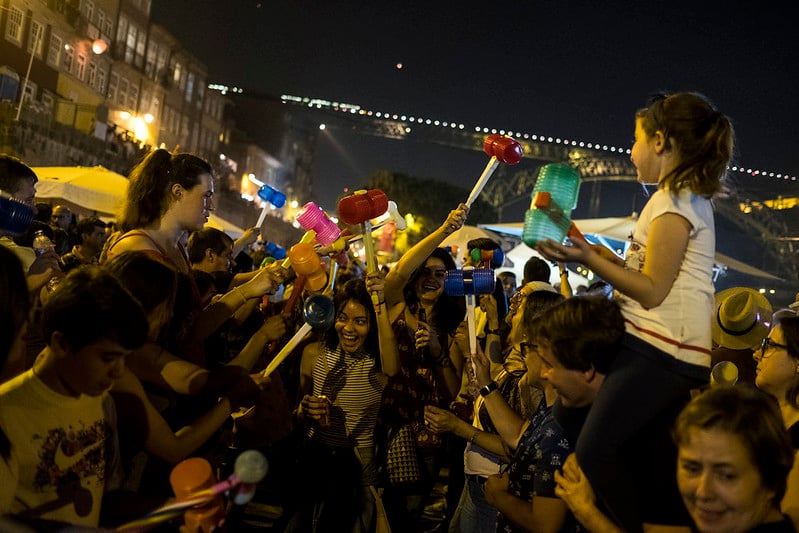
Leeks and Garlic Flowers: Alongside the hammers, people use something much more traditional: leeks and purple garlic flowers. This practice goes back more than six centuries. Leeks were believed to bring good fortune, so leeks were placed on the front door of a house in ancient times. During the São João Festival, hitting people on the head with purple garlic flowers or leeks is said to bring good luck to the people! These plants are believed to also have protective and purifying properties, adding a traditional and symbolic touch to the celebrations.
2. Jumping Over Bonfires
On St. John’s Eve, the streets of Porto and other cities light up with bonfires. Jumping over these bonfires is a widespread and cherished practice. It’s seen as a way to purify oneself and seek good fortune. This custom has ancient roots in pagan traditions that celebrated the summer solstice, symbolizing the transition and purification that comes with the change of seasons.
The act of jumping over bonfires is not only a thrilling spectacle but also a deeply symbolic ritual. It represents the renewal of life, the burning away of the old, and the welcoming of the new. Participants believe that leaping over the flames brings good luck, health, and protection from evil spirits. The sight of numerous small bonfires lining the streets, with people of all ages taking turns to jump, is both mesmerizing and heartwarming.
In addition to personal purification, the bonfires serve as communal gathering points. Friends and families come together around these fires, sharing stories, singing songs, and enjoying each other’s company. The warmth of the fire and the shared experience foster a sense of unity and togetherness that is at the heart of São João celebrations.
3. Fireworks and Hot Air Balloons
The night sky during São João is a spectacle of light and color. One of the most anticipated moments is the fireworks display installed on barges in the middle of the Douro River and over the Dom Luís I Bridge. This dazzling show, reflected in the waters below, captivates thousands of spectators and lasts about 15 minutes.
The reflection of the fireworks on the Douro River makes for a truly spectacular sight. Families and friends gather along the riverbanks to enjoy the show. Why don’t you join them and find a place to enjoy the show?
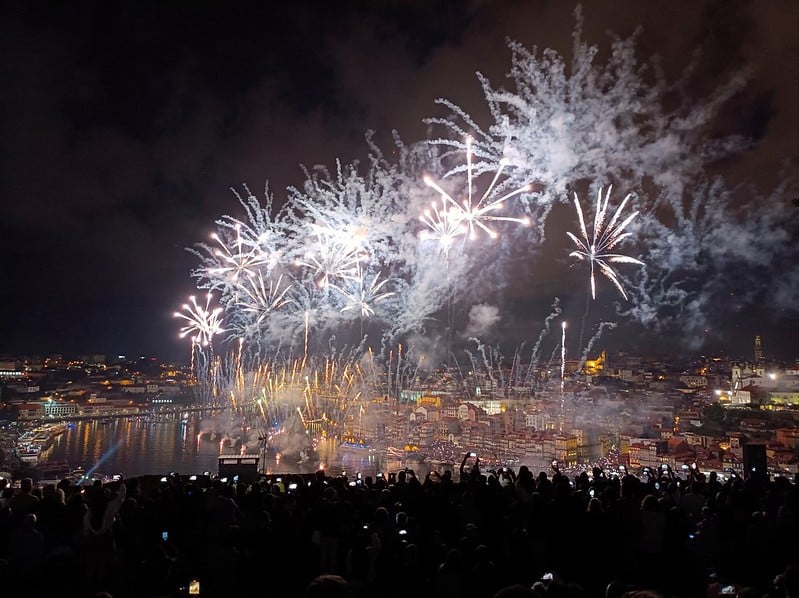
Matt Staveley, Flickr
Hot Air Balloons: Adding to the magic, locals also release hot air balloons around midnight, known locally as “balões de São João,” made of colored paper into the sky. These balloons, slowly rising and drifting, symbolize the participants’ hopes and wishes, creating a mesmerizing and memorable sight. The tradition of balloons originated from a pagan tradition of celebrating the summer solstice in which the element of fire was honored.
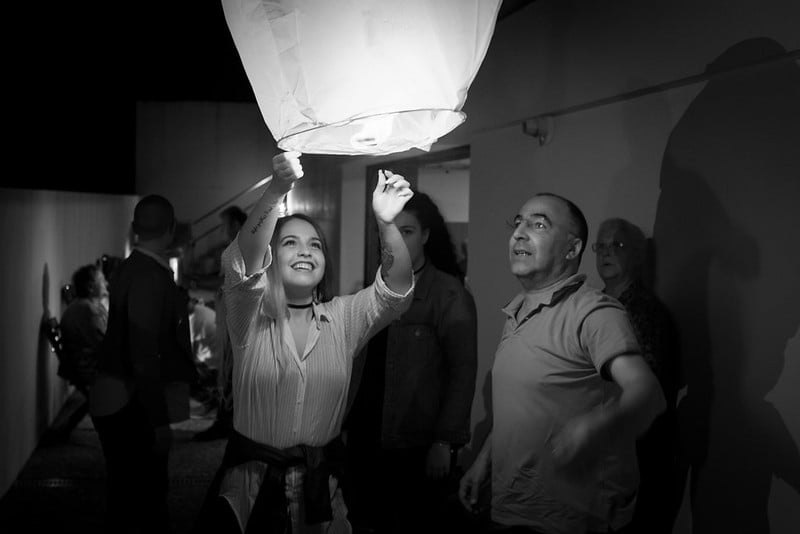
4. Grilled Sardines and Bifanas
Food plays a central role in São João festivities, bringing people together over hearty meals and local delicacies. Grilled sardines are the star of the show, often served on bread with roasted peppers. This simple yet delicious dish is synonymous with summer festivals in Portugal.
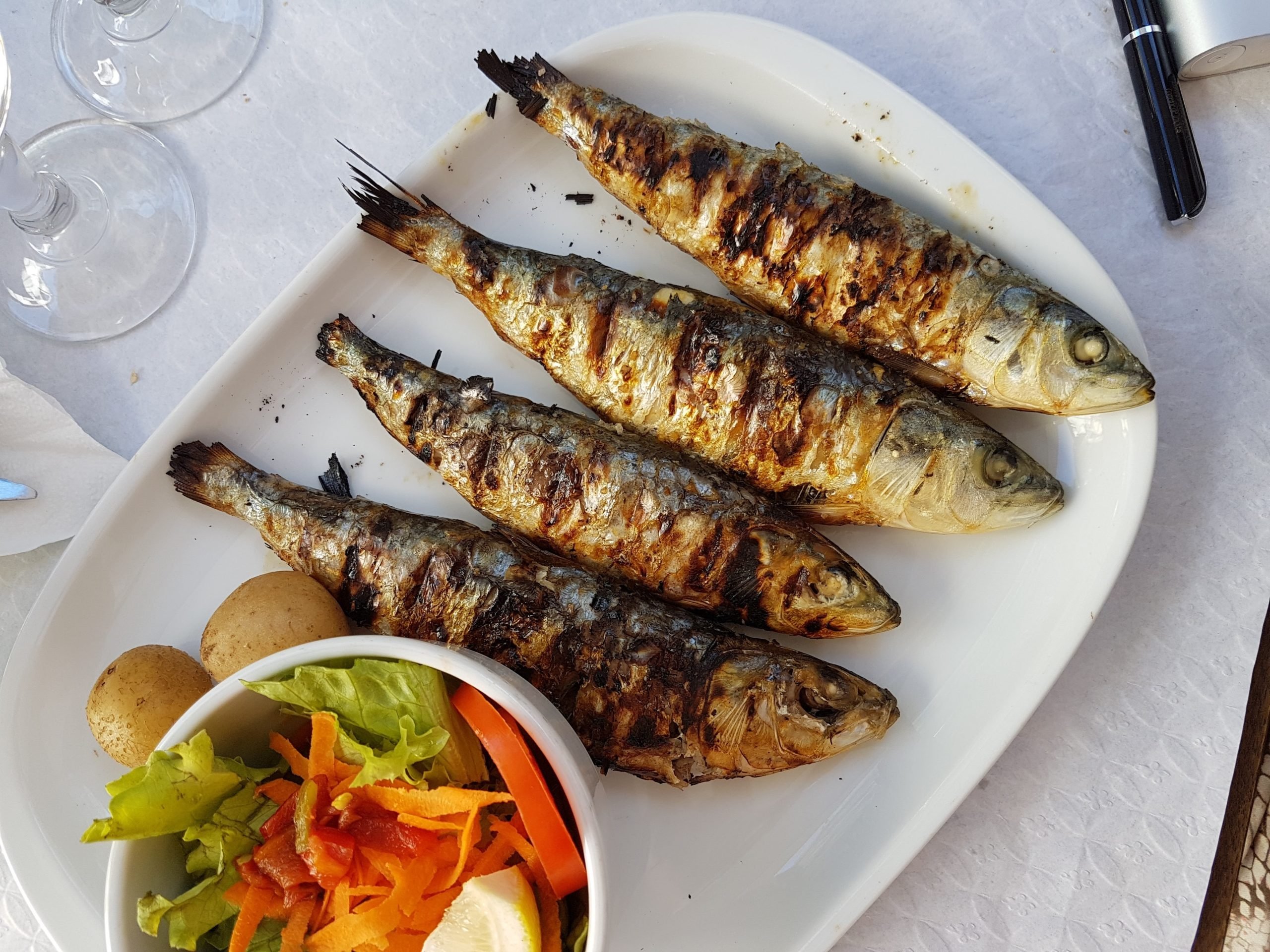
Other Delicacies: Alongside sardines, you’ll find dishes like caldo verde (a traditional Portuguese soup made with kale, potatoes, and chorizo), bifanas (pork sandwiches), and febras (grilled pork chops). These meals are typically accompanied by wine, sangria, and plenty of cheerful toasts.
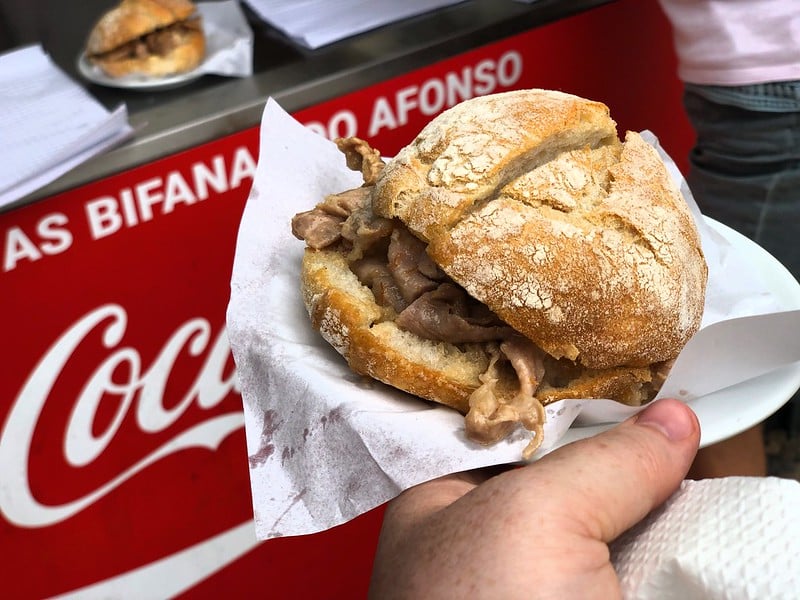
The preparation of these traditional foods often begins days in advance. Families and communities come together to marinate the meat, prepare the vegetables, and set up grilling stations. The aroma of grilled sardines fills the air, creating an irresistible invitation to partake in the feast.
Food stalls line the streets, offering a variety of regional specialties. The communal aspect of dining, with tables set up in the open air, encourages interaction among locals and visitors alike. Sharing a meal during São João is about celebrating togetherness and hospitality.
5. São João in Braga – The Procession of St. John
While Porto’s celebrations are perhaps the most famous, Braga also hosts grand São João festivities with a unique flavor. Known as the “Portuguese Rome,” Braga infuses its celebrations with a strong religious component.
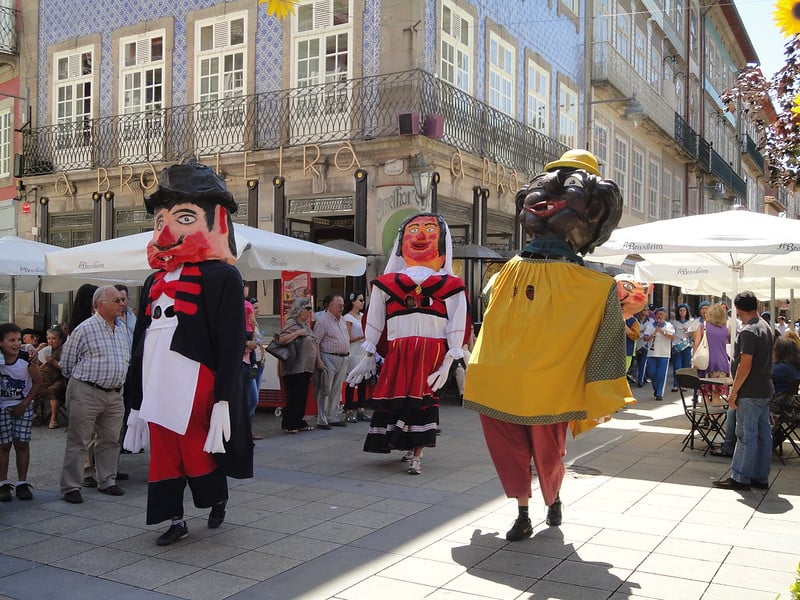
Religious Processions: The highlight in Braga is the Procession of St. John, where an image of the saint is carried through the streets, accompanied by the faithful, philharmonic bands, and scout groups. This procession is a poignant display of faith and community spirit.
Arraiais and Competitions: Braga’s celebrations also feature arraiais (street parties) and sanjoaninas cascades competitions. The cascades are small, creative representations of rural life and biblical scenes made from recyclable materials. These festivities showcase local creativity and deepen the communal bonds.
The procession of St. John is a deeply moving event. It begins with a solemn mass, after which the image of St. John is paraded through the streets on a beautifully decorated float. The streets are lined with onlookers who join in singing hymns and saying prayers. The sense of reverence and communal faith is palpable, making it a spiritually enriching experience.
The arraiais in Braga are lively street parties that feature live music, dancing, and a variety of food and drink. These parties are set up in different neighborhoods, each with its own unique character and offerings. The sanjoaninas cascades competitions encourage participants to create intricate displays using natural and recyclable materials, reflecting themes from local culture and history. These displays are judged, and the best ones receive prizes, adding an element of friendly competition to the festivities.
Final Thoughts
São João in Portugal is a vibrant celebration of tradition, community, and joy. From playful hammer taps and bonfire jumps to the magic of fireworks and the taste of grilled sardines, these customs create an unforgettable experience. Whether in Porto, Braga, or other parts of the country, participating in São João allows you to immerse yourself in Portuguese culture and connect with the festive spirit that defines these summer nights. So, join in the fun, dance to the music, savor the food, and let the energy of São João sweep you into the heart of Portuguese culture!

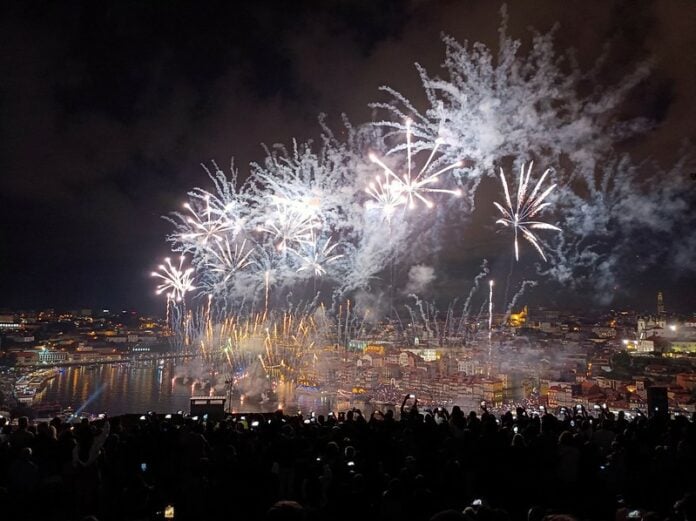

In Porto at São João, they do not tap people with ‘cloves’ of garlic, but the stalks with the clusters of purple flowers, which are in bloom at this time of year!
Thank you very much, V! We have now updated this information.